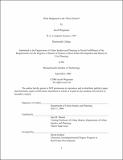| dc.contributor.advisor | Sam B. Warner. | en_US |
| dc.contributor.author | Wegmann, Jacob (Jacob G.) | en_US |
| dc.contributor.other | Massachusetts Institute of Technology. Dept. of Urban Studies and Planning. | en_US |
| dc.date.accessioned | 2007-06-27T20:25:09Z | |
| dc.date.available | 2007-06-27T20:25:09Z | |
| dc.date.copyright | 2006 | en_US |
| dc.date.issued | 2006 | en_US |
| dc.identifier.uri | http://dspace.mit.edu/handle/1721.1/37424 | en_US |
| dc.identifier.uri | http://hdl.handle.net/1721.1/37424 | |
| dc.description | Thesis (S.M. and M.C.P.)--Massachusetts Institute of Technology, Dept. of Urban Studies and Planning, 2006. | en_US |
| dc.description | This electronic version was submitted by the student author. The certified thesis is available in the Institute Archives and Special Collections. | en_US |
| dc.description | Includes bibliographical references (p. 112-115). | en_US |
| dc.description.abstract | This thesis examines the three-decker, a type of small apartment house ("superposed flats") that is common in the Boston metropolitan region and elsewhere in New England. The three-decker is distinctive in two ways: its physical form, which is moderately dense and yet modest in scale; and its tenancy structure, which typically involves one household owning the entire building, while residing in one apartment and renting out the other two. This thesis poses three, interrelated questions: What is the origin of the three-decker? Why did it substantially disappear in the Boston area after 1920, and altogether by 1930? And what has kept it from coming back? In order to get at these questions, the thesis both examines the three-decker in its local context, and compares and contrasts it with similar building types in three other North American cities that have a rich tradition in them: Chicago, Montreal, and New York City. Chapter 1 introduces the topic and describes the three-decker and its counterparts elsewhere. Chapter 2 is a historical analysis that addresses the questions of the origins and decline of the three-decker. | en_US |
| dc.description.abstract | (cont.) Chapters 3, 4, 5 examine in turn design, economic, and regulatory factors that impinge, either negatively or positively, on the prospects for the three-decker and similar building types in the present day. Chapter 6 offers a summary of the findings, along with policy recommendations pertaining to the encouragement of superposed flat production and some final thoughts on the viability of the three-decker today. The three-decker is found to be a building type that is problematic in all but a few limited applications in the current era. However, the broader category of superposed flats is found to offer a great deal of potential, both for urban form-giving and for affordable housing. This potential is currently being realized, to different extents and in different ways, in Chicago, Montreal and New York, but not in Boston. This thesis argues that this should change, and that furthermore the superposed flats family of buildings has a lot to offer to cities - the majority of metropolitan areas on the North American continent - where it has never been part of the palette of residential forms. | en_US |
| dc.description.statementofresponsibility | by Jacob Wegmann. | en_US |
| dc.format.extent | 115 p. | en_US |
| dc.language.iso | eng | en_US |
| dc.publisher | Massachusetts Institute of Technology | en_US |
| dc.rights | M.I.T. theses are protected by copyright. They may be viewed from this source for any purpose, but reproduction or distribution in any format is prohibited without written permission. See provided URL for inquiries about permission. | en_US |
| dc.rights.uri | http://dspace.mit.edu/handle/1721.1/37424 | en_US |
| dc.rights.uri | http://dspace.mit.edu/handle/1721.1/7582 | |
| dc.subject | Urban Studies and Planning. | en_US |
| dc.title | What happened to the three-decker? | en_US |
| dc.title.alternative | What happened to the tripple-decker? | en_US |
| dc.type | Thesis | en_US |
| dc.description.degree | S.M.and M.C.P. | en_US |
| dc.contributor.department | Massachusetts Institute of Technology. Department of Urban Studies and Planning | |
| dc.identifier.oclc | 123191174 | en_US |
